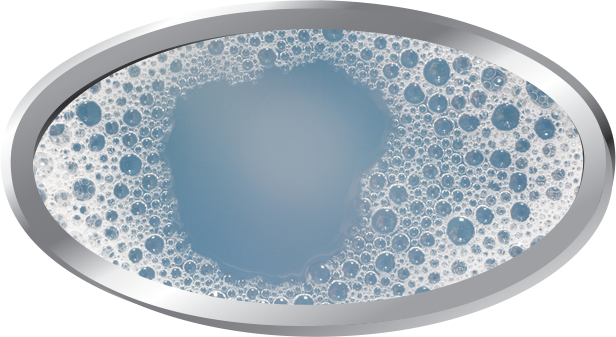Discover the Environmental Impact of Defoamers in Industrial Applications
Discover the Environmental Impact of Defoamers in Industrial Applications
Blog Article
Choosing the Right Defoamer for Your Particular Application Demands
Choosing the ideal defoamer for particular application requirements is a nuanced process that demands mindful consideration of multiple variables, such as the foam medium, kind, and operating conditions. Comprehending the subtleties of defoamer efficiency-- consisting of rate and persistence-- while also representing regulative and environmental factors is crucial. In addition, engaging in trials and seeking advice from with suppliers can provide valuable insights. Browsing these complexities can be challenging, and the repercussions of an inadequate selection might be considerable. What strategies can be utilized to make certain an optimum choice?
Recognizing Foam Formation
Foam formation happens when gas is caught within a liquid, developing a secure structure of bubbles. This phenomenon can dramatically influence various industrial processes, specifically in markets such as food manufacturing, pharmaceuticals, and wastewater therapy. The presence of foam can prevent blending, lower product quality, and even cause functional inefficiencies.
Foam usually develops due to a combination of variables, including surface-active agents, anxiety, and the attributes of the liquid stage. Surfactants lower the surface area tension of the liquid, assisting in the development of bubbles that can integrate and support. Anxiety, whether from mechanical mixing or gas introduction, boosts bubble formation, bring about raised foam quantity.
Comprehending the mechanics of foam development is vital for industries intending to optimize their processes. By determining the specific conditions that promote foam generation, organizations can execute methods to minimize its impacts.
Kinds of Defoamers Available
Various kinds of defoamers are available to resolve the difficulties posed by foam in commercial applications. defoamers. Generally categorized, defoamers come under three groups: silicone-based, non-silicone-based, and all-natural defoamers
Silicone-based defoamers are renowned for their performance and security across a wide variety of temperature levels and pH levels. They are typically made use of in applications where strong foam suppression is necessary, such as in finishings, paints, and adhesives. Their reduced surface stress enables for rapid foam collapse.
Non-silicone-based defoamers, usually made from organic substances, supply an option for applications sensitive to silicone deposits. These defoamers can be additional split right into polyether and ester types, each customized to meet certain formulation needs. Non-silicone defoamers are frequently utilized in food handling and personal care items as a result of their compatibility with various formulas.
All-natural defoamers, stemmed from plant or pet sources, are gaining traction due to their environment-friendly profile. These products are specifically appealing in applications where regulatory compliance and sustainability are extremely important, such as in agrochemicals and biotechnology.
Choosing the ideal sort of defoamer is essential for optimizing performance and ensuring compatibility with certain applications.
Trick Application Factors To Consider
When picking a defoamer, it is essential to think about the certain application needs to guarantee ideal performance. defoamers. Different sectors have unique demands, such as food processing, drugs, or wastewater therapy, and each application may call for one-of-a-kind defoaming residential properties
Key factors Read More Here to assess consist of the tool in which the defoamer will be utilized, whether it is water-based, oil-based, or a mix thereof. The temperature and pH levels of the application can also significantly influence the performance of a defoamer. Furthermore, compatibility with various other chemicals existing in the system is essential to avoid adverse responses that can compromise efficiency.
Another crucial factor to consider is the frothing habits of the certain system. Recognizing whether the foam forms promptly or gradually can assist the selection of a defoamer that targets the source efficiently. The desired rate of defoaming can influence the choice, as some applications need fast action while others might tolerate slower defoaming procedures.
Lastly, governing and environmental considerations should not be overlooked, particularly in markets with rigorous conformity requirements. Choosing a defoamer that straightens with these factors ensures Recommended Reading both effectiveness and safety and security in the application.

Performance Testing Techniques
Reviewing the efficiency of a defoamer needs a methodical method to screening that precisely determines its effectiveness in specific applications. Various efficiency screening methods can be utilized to establish the optimal defoamer for a given solution.
One usual approach is the bubble examination, which assesses the defoamer's ability to lower foam quantity gradually. This test entails directory creating a secure foam and after that adding the defoamer to observe the price of foam collapse. One more approach is the vibrant foam test, where foam is generated under regulated problems to replicate real-world application situations. This approach gives understandings into just how the defoamer does under differing shear problems.

Ultimately, selecting the suitable performance testing method relies on the details application and the kind of foam being attended to. Each method provides important data that can assist formulation adjustments and boost the performance of the defoamer in sensible applications.
Ideal Practices for Option


Following, consider the defoamer's efficiency in regards to rate of activity and perseverance. A quick-acting defoamer may be needed for procedures where fast foam suppression is vital, while an extra relentless solution may be required for long term foam control. Additionally, assess the environmental impact of the defoamer, including its biodegradability and any kind of regulatory compliance requirements.
Conduct trials with picked defoamers to establish their performance in real-world problems. This action is essential to verify that the chosen item satisfies performance assumptions. Consult with manufacturers or distributors for technological support and guidance, as they can give useful understandings right into item solutions and application methods. By adhering to these finest methods, you can improve foam control efficiency and make certain the longevity of your processes.
Conclusion
In recap, selecting the ideal defoamer requires a detailed analysis of numerous factors, consisting of foam type, medium, operating conditions, and environmental considerations. Recognizing the distinct attributes of foam development and the readily available defoamer alternatives is vital.
Selecting the appropriate defoamer for specific application needs is a nuanced process that requires mindful factor to consider of numerous variables, such as the foam operating, medium, and type problems.Picking the appropriate defoamer is crucial for achieving optimum efficiency in foam control applications. A quick-acting defoamer might be needed for procedures where fast foam reductions is crucial, while a more persistent solution could be needed for extended foam control.In summary, selecting the ideal defoamer demands a thorough evaluation of various variables, consisting of foam type, medium, operating problems, and environmental considerations. Understanding the distinct characteristics of foam development and the offered defoamer choices is important.
Report this page